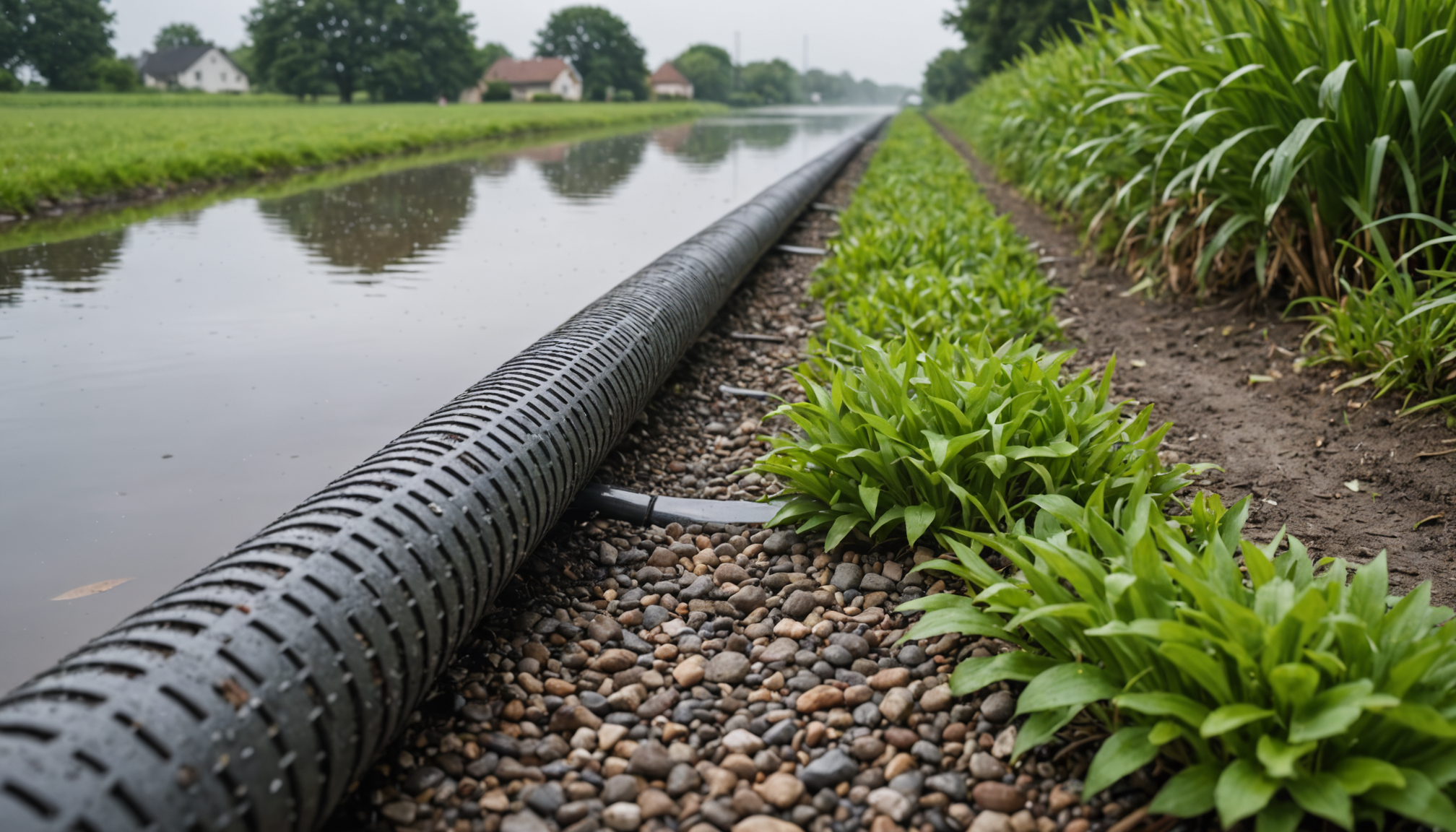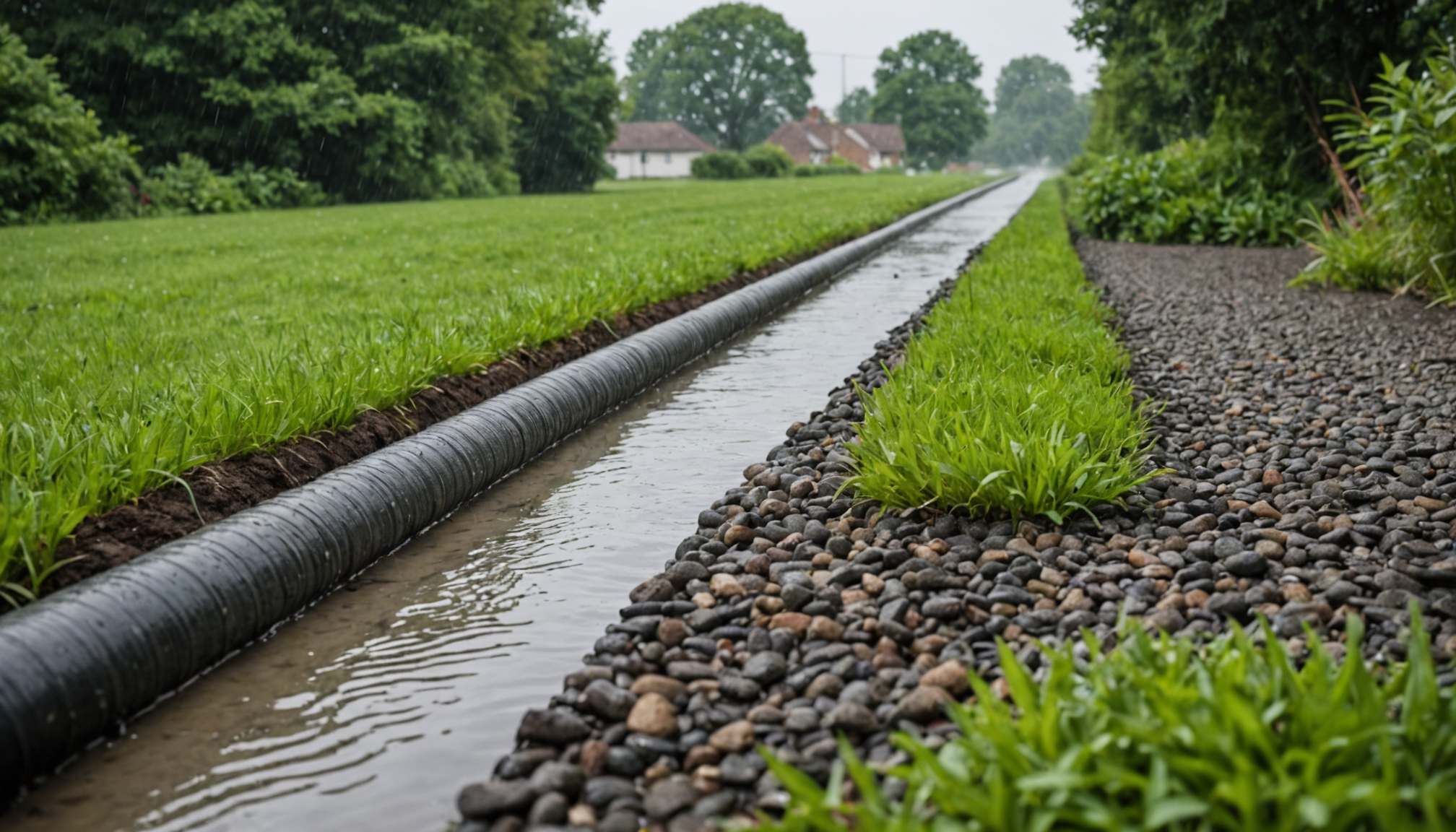When considering the best drainage solutions for Missouri yards, it’s crucial to understand how different systems perform under various conditions. Two popular choices are French drains and trench drains, each with unique features that offer distinct benefits in terms of drainage effectiveness. Choosing the right system can prevent water from pooling, protect landscaping, and even safeguard the foundation of your home.
French drains operate on the principle of gravity. They are designed to redirect water by providing a path of least resistance, channeling water away from problem areas. This system is excellent for properties where water tends to settle or in areas with a high water table. A typical French drain involves a perforated pipe laid in a trench filled with gravel, allowing water to enter the pipe and get directed away. Because of this setup, French drains are particularly effective in dealing with broad surface area water issues and managing subsurface water seepage, making them suitable for flat or sloped yards found throughout Missouri.
In contrast, trench drains, also known as channel drains, act more like gutters that handle surface water overflows, offering an immediate solution for water redirection. This system involves a narrow trench with a grated cover designed to capture water directly from the surface and channel it efficiently away from the area. Trench drains work exceptionally well in high-traffic areas or where surface water accumulation is a primary concern, such as driveways, patios, and walkways.
When comparing the drainage effectiveness of both systems, it’s essential to consider the specific environment. Experts recommend French drains for larger areas with soil saturation problems since they can manage greater volumes of water over time. According to the University of Missouri Extension, timely and effective drainage is critical to prevent soil erosion and maintain plant health, underscoring the need for suitable solutions tailored to the regional climate and soil conditions typical in Missouri.
On the other hand, trench drains might not be as effective in managing below-ground water but excel at capturing and redirecting surface runoff, particularly during heavy rainfalls, which Missouri frequently experiences. This makes them an excellent choice for immediate removal of water from hardscaped surfaces or gently sloping terrain where surface water needs rapid evacuation to prevent pooling that might damage property or facilitate unsafe conditions.
Ultimately, the decision between French and trench drains should be informed by the specific drainage challenges you face. By analyzing your property’s drainage needs, and with consideration to Missouri’s unique climatic and topographic conditions, you can select a system that offers the most effective solution, providing peace of mind and preserving the longevity of your outdoor spaces.
Installation process overview
When it comes to installing drainage systems like French drains and trench drains in Missouri yards, understanding the process is integral to achieving effective results. The installation procedures for these systems differ based on their design and intended purpose, but both aim to manage water flow and prevent water-related damage effectively.
For French drains, the installation process begins with mapping the yard to identify problem areas where water accumulates. Once identified, a trench is excavated along a path that strategically directs water away from these areas. The trench depth is typically a bit deeper than the final placement of the perforated pipe to allow room for a layer of gravel beneath it. After placing a layer of gravel, a perforated pipe is laid down, ensuring it’s angled to leverage gravity for optimal water flow. The pipe and surrounding trench are then backfilled with more gravel to promote easy water infiltration. This gravel not only aids in water capture but also acts as a stabilizer, maintaining the trench’s integrity. The top of the trench may be covered with soil and grass to integrate seamlessly with the rest of the yard while remaining functional.
Installing trench drains, however, involves a slightly different approach. Known for addressing surface water, trench drain installation begins with marking the location on hardscaped areas such as driveways or patios. Cutting through the surface is necessary, followed by excavating a trench of adequate width and depth to accommodate the trench drain channel system. Once the trench is ready, the channel is placed and leveled carefully to ensure efficient water drainage. The proper slope is crucial, as it ensures water flows towards the drain’s exit point. The trench drain is then fixed in place and surrounded with concrete for stability and durability. Finally, the grated cover is installed on top, allowing seamless surface water capture while preventing debris intrusion.
Despite the technical differences in installation processes for these drainage systems, being meticulous about preparation, precision in execution, and adhering to local regulations in Missouri are necessary to ensure they function optimally and endure over time.
- French drains are well-suited for yards with broad surface area drainage needs, where water tends to pool due to poor subsurface flow.
- Trench drains are ideal for capturing surface runoff effectively and quickly, making them perfect for paved areas and locations prone to water pooling.
- Ensuring the correct slope during installation is crucial for effective drainage, regardless of the system chosen.
- Both systems require tailored installation strategies, so consider the specific layout and hydrology of your Missouri yard before proceeding.
- Local regulations and soil conditions in Missouri should be checked and considered during planning and installation to ensure compliance and effectiveness.
Maintenance requirements
Proper maintenance is crucial to ensure that both French drains and trench drains effectively manage water flow in your Missouri yard. Without regular upkeep, these systems can become clogged, reducing their efficiency and potentially leading to water damage. One common mistake people make is neglecting to perform routine inspections. It’s important to check French drains and trench drains at least twice a year, preferred during spring and fall, to ensure they are functioning as intended.
For French drains, the primary concern is debris accumulation in the gravel or the pipe becoming clogged with sediment. Over time, soil, leaves, and other debris can infiltrate the gravel layer, restricting water flow. To avoid this, periodically flush the system with water to clear minor clogs. Additionally, consider replacing the gravel if you notice water is not draining as it should. Installing a filter fabric during the initial installation can also help minimize debris entry, though it should be checked and replaced occasionally as part of your maintenance routine.
Trench drains require attention primarily to the grated cover and the channel beneath. Debris such as leaves, twigs, and dirt can easily accumulate on the surface, blocking the grate and preventing water from entering the system. It’s crucial to regularly clear the top of the grate with a broom or blower, especially after storms or heavy winds that might deposit debris on your property. Additionally, remove the grate periodically to clean out the inside of the trench and ensure it remains unobstructed. Using a hose can help flush out minor accumulations of dirt or sediment.
In both systems, ensuring proper drainage requires attention to the slope and structural integrity of the installation. Sometimes, settling will cause shifts in the drain components, potentially altering the slope and leading to inefficiencies in water flow. Regularly examining the system for such issues can prevent long-term problems. In the case of trench drains, checking the stability of surrounding concrete is important, as cracks or shifts can impact the drain’s effectiveness.
By staying proactive and conducting regular maintenance checks, you’re less likely to encounter major issues, ensuring that your yard remains free from water damage and the systems continue to function effectively. Paying attention to the unique needs of your drainage systems will ensure they provide long-term benefits, preserving the beauty and health of your Missouri yard.
Cost considerations
When considering the expenses associated with installing and maintaining drainage solutions in Missouri, there are several factors to weigh, particularly when choosing between French drains and trench drains. The initial costs of each system can vary significantly, largely depending on the specific requirements of your yard, the complexity of the installation, and the materials used.
French drains typically involve higher upfront costs due to the extensive excavation needed and the materials involved, like gravel and perforated pipes. The price of labor should also be factored in, as installation requires skill to ensure proper water flow through slope and design. However, this initial investment can be mitigated by the long-term savings they provide through effective management of subsurface water and reduction of moisture-related issues around the home.
On the other hand, trench drains are often more affordable to install, especially in hardscaped areas like driveways and walkways. Their relatively straightforward installation and the use of pre-cast channel systems tend to reduce both material and labor costs. However, if the trench drain system needs extensive customization or is installed in challenging terrain, costs could increase substantially.
In terms of maintenance costs, both systems require regular upkeep, although the nature of this maintenance differs. French drains might incur periodic expenses for gravel replacement and sediment removal. Trench drains necessitate consistent cleaning of the grates and channels, which can lead to additional costs if the system is neglected over time. Failure to maintain either system properly can lead to costly repairs or replacements, emphasizing the importance of ongoing stewardship.
Ultimately, your choice should reflect a careful analysis of both initial and maintenance costs, balanced with how effectively each system addresses the specific drainage needs of your Missouri property. Remember, investing in the right system can safeguard your home and yard from water damage, proving both cost-efficient and invaluable over time. Opt for the solution that aligns with your budget while fulfilling your yard’s drainage requirements, ensuring that your landscape remains a dry and welcoming space throughout the years.
Choosing the right drain for your yard
- How do I know if I need a French drain or a trench drain for my yard?
- Assess the specific water drainage issue you are facing. If your yard frequently has subsurface water pooling or you have a flat or sloped landscape, a French drain might be more suitable. On the other hand, if surface runoff is your main concern, especially on paved areas, a trench drain could be the better choice.
- What is the lifespan of a French drain compared to a trench drain in a Missouri yard?
- Both French and trench drains can last many years with proper installation and maintenance. Typically, a French drain may last anywhere from 30 to 40 years, while a trench drain can last between 20 to 30 years, depending on the materials used and the environmental conditions in Missouri.
- Will installing a drainage system affect my landscaping?
- Installation of either a French drain or trench drain will require some disruption to your yard as trenches need to be dug. However, these changes can be minimized with professional planning and careful execution. After installation, any disturbed areas can usually be restored with grass or other landscaping elements to maintain the yard’s visual appeal.
- Can I install a French or trench drain by myself?
- While it’s possible for experienced DIY enthusiasts to install these systems, professional installation is recommended to ensure proper functionality. This is especially true for complex or large-scale projects, where precise grading and adherence to local ordinances are crucial for effectiveness and compliance.
- What should I consider about local regulations when installing a drainage system in Missouri?
- Before installing a drainage system, check for local regulations or restrictions that may govern backyard installations. This may include permits, zoning laws, and environmental considerations, to ensure compliance and avoid legal issues. Working with a knowledgeable contractor familiar with Missouri regulations can help navigate these requirements effectively.

